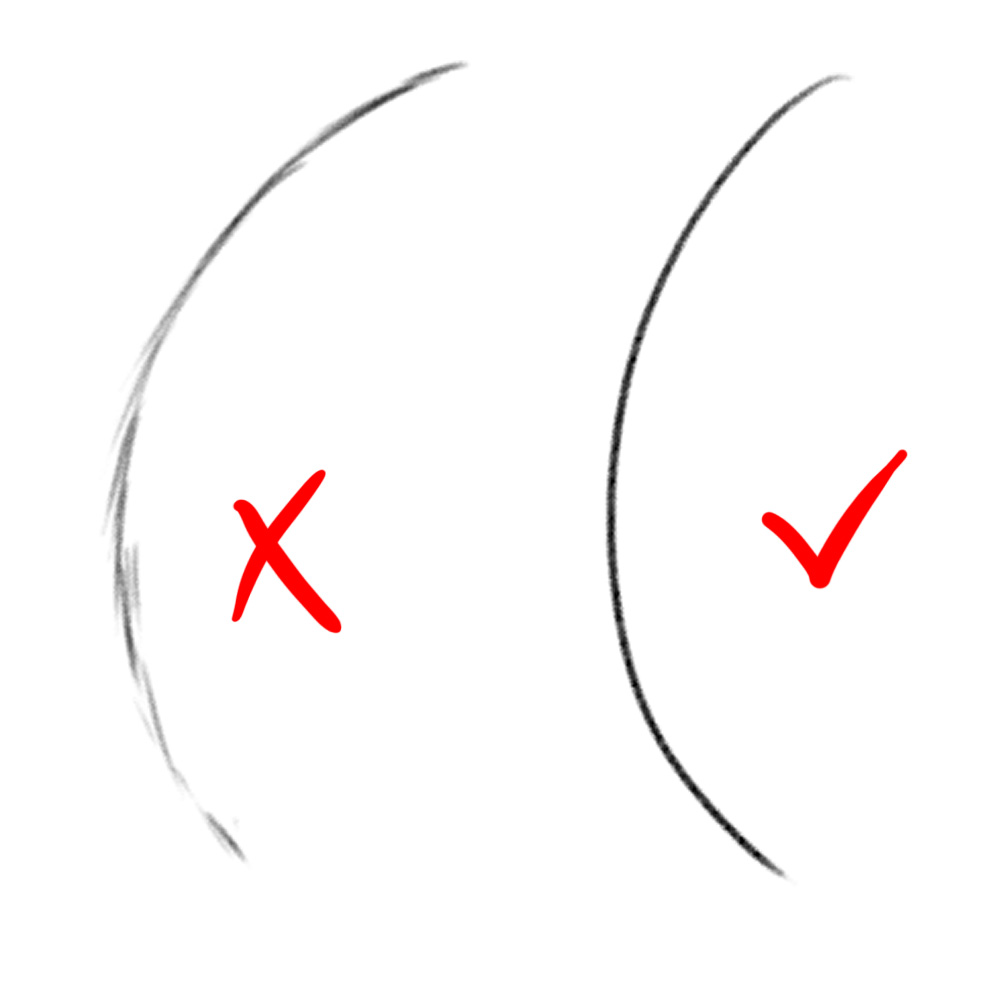How to Find the Original Art From a Tracer
(Had to postpone this i due to some electrical and Ac issues at my crib and so just pretend this was posted forever ago)
So traced art is pretty prevalent...
Simply what's not often discussed is how to recognize it when you see information technology. How is it that some people tin can just expect and know? I'm gonna give you a few of the signs that personally tip me off to traced artwork.
Disclaimer!
None of these signs tin "condemn" anyone without a shadow of a dubiety, but cast reasonable doubt upon a particular artwork. Some signs may show up in non-traced art as well. Employ logic and proper judgement when making any assumptions. Obvious tracing is obvious, only don't witch hunt.
All these signs pertain to cartoon figures and non objects/landscapes.
Understanding why well-nigh (bad) tracing is done helps the states recognize some of the signs quite readily. By far, the bulk of the fourth dimension someone traces to pass of fine art equally their own, they are tracing for beefcake specifically, so irresolute other parts of the drawing to turn it into the picture they want. Because of this, in that location is often a clear disconnect going on in aspects of the artworks.
Information technology is extremely unlikely for an artist to attain a fairly high skill level anatomy wise without also improving on other parts of their fine art. Fifty-fifty if your coloring isn't exactly as great every bit your linework, it'southward still going to get slowly better over time whether you are actively trying to ameliorate it or not. Anybody improves at unlike rates, simply it would be extremely hard for an artist to KEEP one skill level depression while improving another. By the time you're slap-up at anatomy, you're also going to be pretty skilful at your actual lines past virtue of all the practice drawing.
1. Good beefcake, poor shading/colors
The anatomy is fine overall, merely when it comes to color this person is at a very elementary skill level. The shading tends to be muddy/fuzzy, defective whatsoever consistent light source (pillow shading), and/or overly light or dark.
In terms of color palette, they tend to use extra saturated or neon colors very often, simply they don't fit well together and often end up in eye-hurty combinations.
2. Adept anatomy, poor color theory
While the anatomy is good and the shading/coloring isn't too garish, it too seems to be very tiresome compared to what you might wait. This mostly applies to shading colors. This person is still getting the hang of color theory, so they tend to still employ the methods choosing monochromatic colors with little variation for their shading, catastrophe up in some non unsightly, merely uninteresting looking shading.

3. Good anatomy, shaky/craven scratch lines
Self explanatory. You lot see this fine art and information technology looks fairly squeamish in terms of what they've drawn, merely how they've drawn it is another story. They either accept very hard, well defined lines that are somehow still wobbly and shaky, or their lines are scratchy and indicate how indecisive/unfamiliar the person was despite having a clear path. These aren't "sketchy lines", they are "scratchy lines."
These are signs that the person had a clear "road map" of where to go, but their easily aren't exactly up to the task of following that path skillfully. This is about often seen in traditional art, peculiarly when you tin see the lines drawn hard into the paper without whatsoever indications of erase marks or guidelines.


(radiantdreamer.net/how-to-draw…)
four. Expert anatomy, no line variation
Can exist digital or traditional every bit. This artwork looks nice but something seems off with the lines considering they are all the same thickness everywhere in the drawing. At that place are some art styles that piece of work with a single line thickness very well, usually more than stylized or cartoony ones, simply this one does not seem similar 1 of them. It just makes the whole matter seem kind of apartment.


5. Mixed skill levels in one flick (frequently dress and hair)
One of the easiest to spot. The person is not very good at attempting to match up their parts of the picture with the traced parts they are using. The body is drawn dandy, but the hair looks stiff and wrong in comparing. The characters may appear to exist "balding" (especically on the sides of the head) because they didn't know where to put the hairline. The wearing apparel accept too many wrinkles, oft going in the wrong directions. The accessories seem big or overly simple. Hats often fit very strangely. Very typical with base fine art.
Besides, boob pockets. (although we are all guilty of those at some point)




6. Frequent, huge fashion shifts
This is more of a whole gallery sign than an individual artwork. There are many people who are very practiced at lots of different styles, but it seems similar this person is near incapable of drawing the aforementioned style twice. Yous can besides see that sometimes their skill level seems to dip very depression, not just because they used a simpler way that time, simply overall seeming like they suddenly got worse. This is usually untraced work that they've made, and information technology stands out very glaringly among all the traced artwork.
vii. Knowers
Lastly, there are some people who just KNOW. Some people see a lot of artwork and have very practiced memories, and when they see a particular slice they can instantly recognize information technology equally familiar, simply maybe they can't put their finger on it. These are usually the ones who terminate upward finding the original artworks, often using prototype sites like danbooru and such to search up similar pics until they find them.
Example
RTNightmare was kind enough to assist me out by providing a tracing example for me to utilize to point out some of the signs. It's a less obvious trace, so in this case you couldn't actually exist completely certain unless you recognized my ain artwork and put ii and 2 together.
What I would notice most when looking at this traced picture would exist the relatively low-cal monochrome shading. Because information technology's a chibi it's a lot harder to tell, since they tend to be very simplified in the start identify. But with the colour in that location information technology gives me more to work with. The green is pretty overpowering this this color palette. The folds on the cuffs of her sleeves also look tacked on, non fitting for how the textile would await. With the more complex skirt folds going on around her legs, it does non brand sense for this same artwork to take such a simple mistake in information technology too. The point existence:
If the artist can describe [complex thing] then they would likewise know how to depict [simpler affair] at a like level.She also demonstrates another attribute in the overlay, that is irresolute pocket-size things then that information technology is not completely exact, but still obvious. Some people think that making modest changes volition get them off the hook, but it does not. At some point at that place are just too many lines and SHAPES and PROPORTIONS (yep, it's not just lines) that match upward for it to be a coincidence. If her eyes looked like mine, no big deal. Simply if the lines match upwardly almost perfectly, and both sets of eyes are exactly the same width and acme apart, that is no accident.
Do have note that all these aspects alone don't make the art here look traced, it's those $.25 of information plus the beefcake that don't match with each other. It doesn't look similar the aforementioned person drew it and likewise colored information technology.
(cheers for helping RT!)
(original) ------ (traced)
------ (traced) 
(overlay proof) 
Jellybeanism also provided a very helpful guide to help encourage people to learn to reference better instead of tracing people'due south fine art. Definitely give it a await.

Thanks for reading and I hope this helps, guys!
Source: https://www.deviantart.com/lady-suchiko/journal/ArtTalk-Signs-of-Traced-Art-762305407
0 Response to "How to Find the Original Art From a Tracer"
Post a Comment